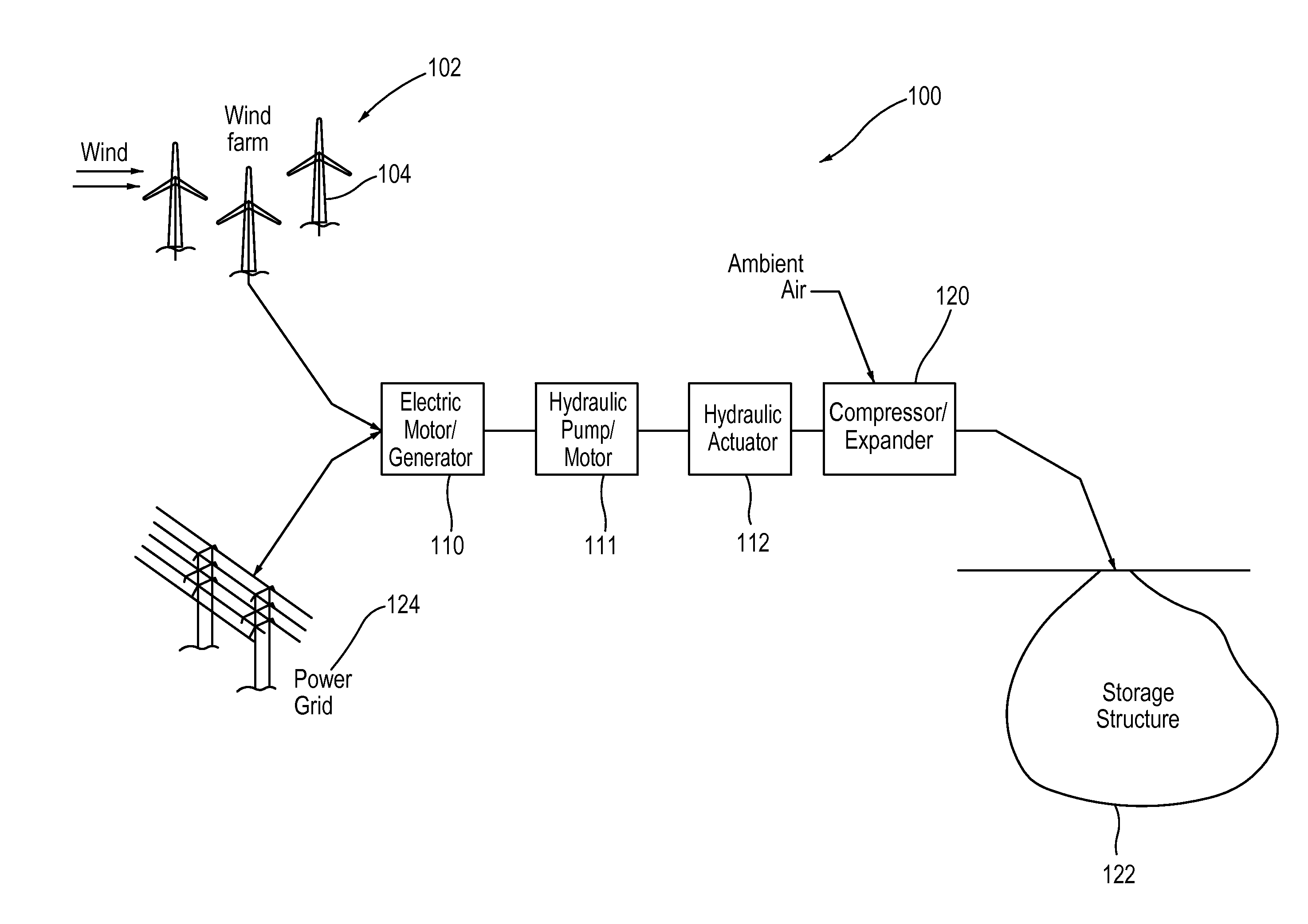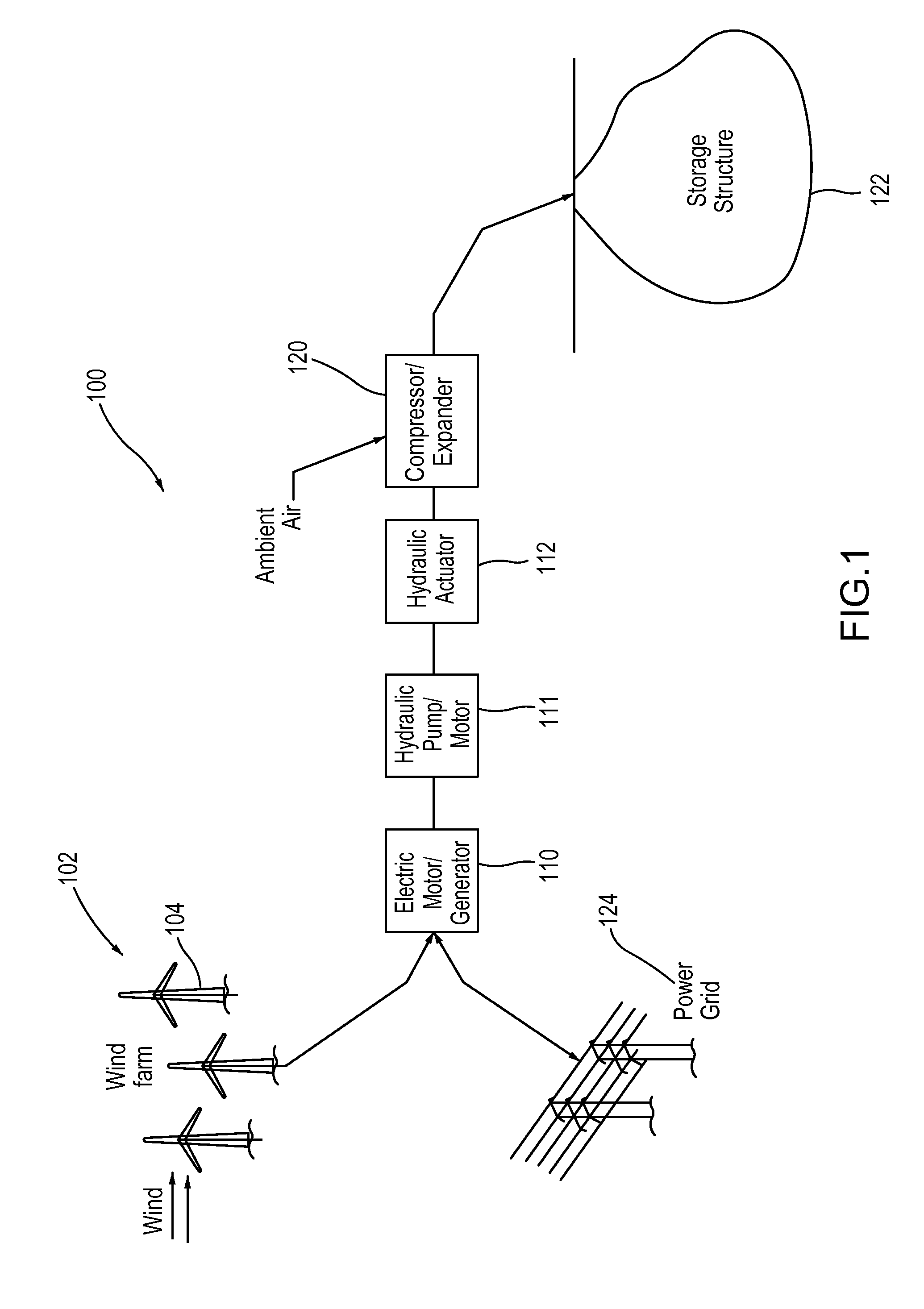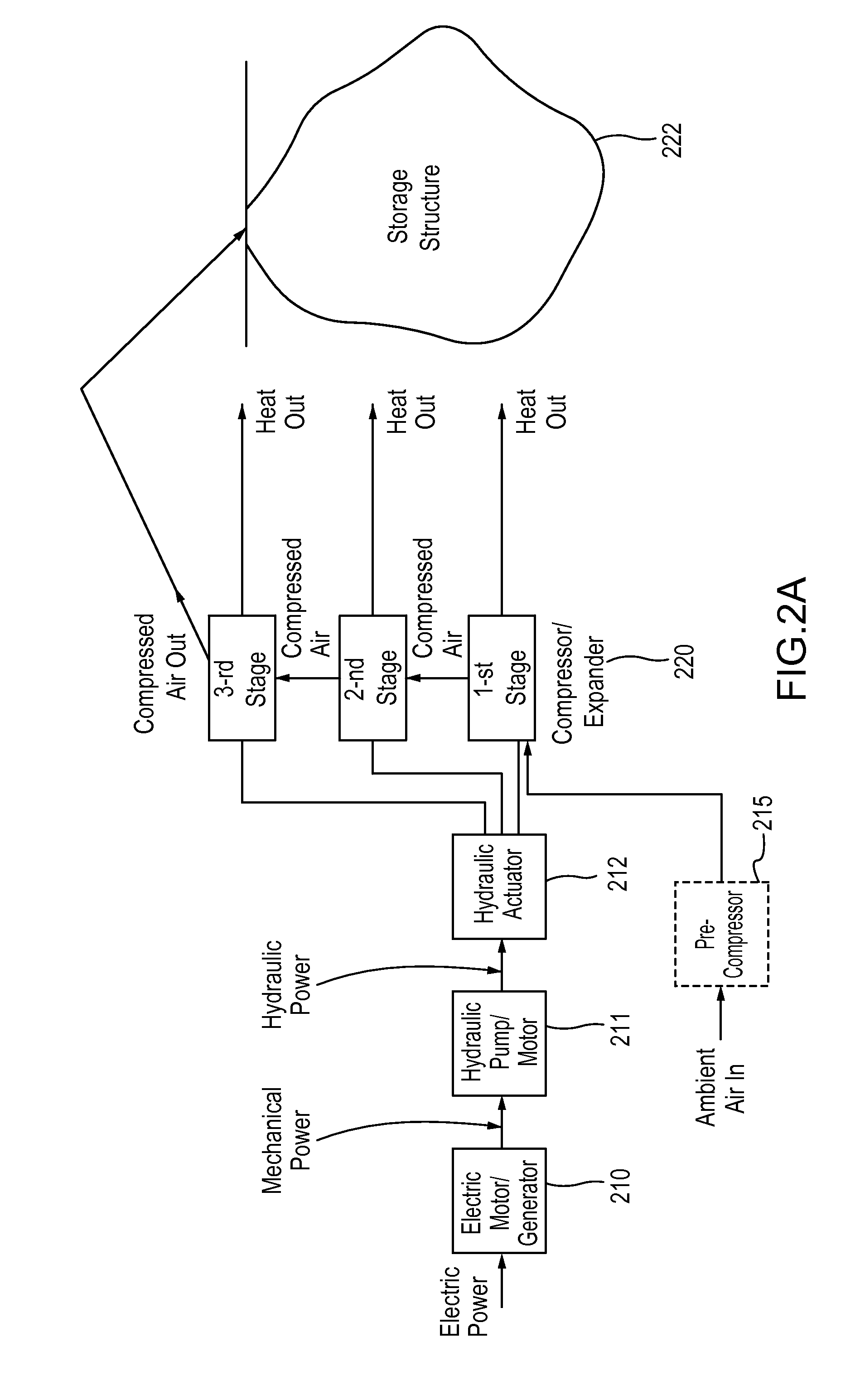System and methods for optimizing efficiency of a hydraulically actuated system
a technology energy efficiency, which is applied in the direction of fluid coupling, piston pump, servomotor, etc., can solve the problems of reducing the efficiency of hydraulic actuation system, so as to achieve the effect of increasing the gas pressur
- Summary
- Abstract
- Description
- Claims
- Application Information
AI Technical Summary
Benefits of technology
Problems solved by technology
Method used
Image
Examples
Embodiment Construction
[0036]Systems and methods for efficiently operating a gas compression and / or expansion system are disclosed herein. The gas compression and / or expansion systems can use one or more hydraulic pumps / motors to move (or be moved by) gas and liquid within the system, and systems and methods are described herein to operate the hydraulic pump / motor in its most efficient regime, continuously or substantially continuously, during an operating cycle or stroke of the system. Hydraulic pumps can have efficient operating ranges that can vary as a function of, for example, flow rate and pressure, among other parameters. Systems and methods of operating the hydraulic pumps / motors are provided to allow them to function at an optimal efficiency throughout the stroke or cycle of the gas compression and / or expansion system.
[0037]As described herein, in some embodiments, hydraulic pumps / motors can be used to drive (or be driven by) a working piston within a gas compression and / or expansion system, in w...
PUM
 Login to View More
Login to View More Abstract
Description
Claims
Application Information
 Login to View More
Login to View More - R&D
- Intellectual Property
- Life Sciences
- Materials
- Tech Scout
- Unparalleled Data Quality
- Higher Quality Content
- 60% Fewer Hallucinations
Browse by: Latest US Patents, China's latest patents, Technical Efficacy Thesaurus, Application Domain, Technology Topic, Popular Technical Reports.
© 2025 PatSnap. All rights reserved.Legal|Privacy policy|Modern Slavery Act Transparency Statement|Sitemap|About US| Contact US: help@patsnap.com



